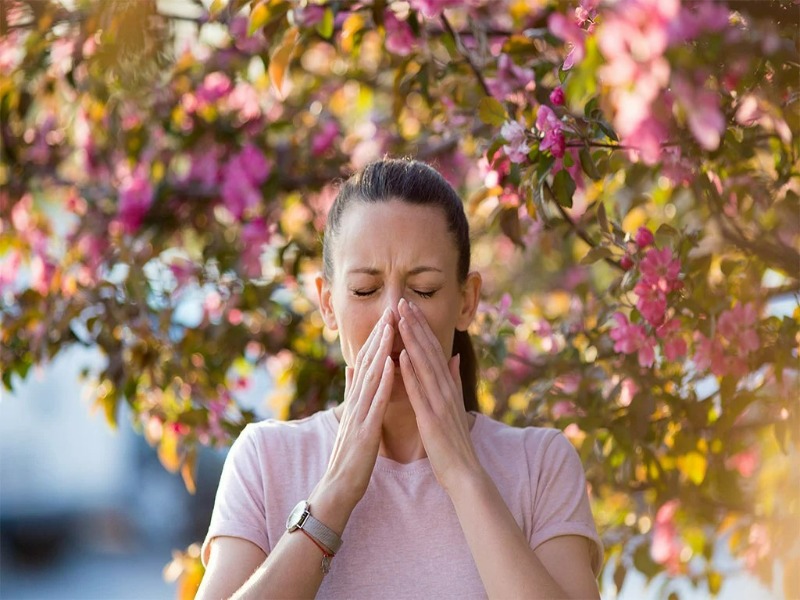Unveiling the World of Unknown and Rare Allergies

Introduction
Allergies are a prevalent phenomenon in today’s world, affecting millions of individuals who experience reactions to various substances, including pollen, dust, and certain foods or this whole process is a matter of rare allergies. While we are well-versed in allergies to common triggers, there exists a captivating and lesser-known realm of rare and uncommon allergies. First of all, starting with this article, we can even say that we are going to dive into the incredibly intriguing world of these relatively unknown and even rare allergies, shedding light on their conditions that only affect that small part of the population. Among them, we will explore the many rare allergies such as lemon and grapefruit, two of the more common food allergies, as well as other unexpected and rare allergic reactions that are sure to surprise you.
Quick Understanding of the Life with Rare Allergies
Let’s start with these rare allergies, they normally by their nature, include all kinds of reactions to less common triggers. From any type of unusual food allergies to environmental sensitivities, these conditions can simply range from mild to life-threatening. The incredible turbulence of these rare allergies often means that diagnosis and treatment can certainly be a journey of trial and error, requiring patience but morale and quite a bit of persistence on the part of those affected. Educating oneself about any kind of these specific rare allergies is crucial. Those people with rare allergies must be a lot more vigilant about potential allergens.
Uncovering the Uncommon: Allergies to Lemons
Lemons are renowned primarily for their delightful flavor and versatility in culinary applications, from elevating the taste of dishes to crafting a variety of invigorating beverages. Nonetheless, for a select minority, lemons can elicit allergic responses rather than providing enjoyment, in which sense they can be put in the group of rare allergies. Lemon allergy is one of the rarest food allergies, affecting only a small part of the population.
The cause of any Allergy to Lemons is still the subject of some ongoing research. Many scientists believe that these rare allergies are related to the proteins present in lemon, similar to other fruit allergies. Those who develop this type of lemon allergy can even experience a range of mild to severe symptoms that can include itching, swelling, and in very rare cases, anaphylaxis.
Although lemon allergies are relatively rare, it also highlights the importance of recognizing that rare allergies can still manifest in unexpected ways. That small portion of the population with a lemon allergy must be cautious when dining out and even when buying packaged foods because lemon and lemon ingredients can be present in many different culinary creations as well as products.

Understanding Grapefruit Allergy
For some individuals, the thought of tasting a juicy grapefruit or drinking a glass of freshly squeezed grapefruit juice a day can cause an incredible sense of satisfaction and refreshment. However, in this unique allergy effect, it’s best to explore the extraordinary journey of those allergic to grapefruit, shedding light on all the challenges they face and all the strategies they use to navigate the world. Which often includes this citrus fruit in various culinary offerings and beverages or simply they are called rare allergies.
The small population that is allergic to grapefruit may not be as prevalent as many other food allergies, but it can also significantly affect the lives of those affected. This grapefruit allergy is the immune system’s response to what is caused only by certain proteins found in the fruit. If someone with this allergy were to come into contact with grapefruit or its derivatives, their immune system would define these proteins as harmful invaders and release chemicals, such as histamines, so that their immune system can defend itself from all these rare allergies.
The Red Meat Allergy Mystery- Unraveled
Red meat allergy, also known as Alpha-Gal syndrome, is an intriguing and highly unusual condition that only occurs from a lone star tick bite. This type of tick injects a sugar molecule called alpha-gal into the host’s bloodstream, which can even lead to an allergic reaction, and in so many ways they are included in the group of rare allergies. Symptoms may appear only a few hours after consuming red meat such as beef, pork, or lamb. This unique allergy belongs to rare allergies and often manifests itself with symptoms such as itching, hives, and in some severe cases, anaphylaxis. Avoiding this allergy involves avoiding red meat and being mindful of exposure to ticks, highlighting some of the complex connections between our environment, immune responses, and dietary choices.
Embracing Warmth Solving the Cold Urticaria
Cold urticaria is one of the very rare allergies where the body’s skin reacts negatively to much lower temperatures, this can be a challenging condition for those who enjoy outdoor activities in the cold winter weather. When they are exposed to cold air, water, or colder objects, people with cold urticaria may also develop red, itchy hives on their skin, and in some severe cases, experience swelling or difficulty breathing. This unique allergy can significantly affect a person’s lifestyle, requiring that type of small population to take extra precautions when facing cold environments or just in other words belongs to the unique and rare allergies. Whether it’s swimming in a cold lake or even pouring a drink with ice, people with cold urticaria must always be careful when moving around to avoid causing unpleasant or dangerous reactions to these nasty rare allergies.
Natural Approach to Living with Solar Urticaria
The warmth of the sun on your skin is often associated with joy and vitality, but for people with solar urticaria, it can cause discomfort and anxiety. Solar urticaria, a rare and unique allergy, that’s why is included in rare allergies, and also causes an allergic reaction in response to exposure to sunlight. While a large part of the population can enjoy the sun without any problem, the small part of them who have solar urticaria even have to take special precautions to be able to protect themselves from the sun’s rays.
Solar urticaria is also a rare form of physical urticaria, a condition where physical stimuli such as heat, cold, or pressure can cause allergic skin reactions. In the case of solar urticaria, sunlight is the greatest enemy of that part of the population. When the affected individual’s skin is exposed to sunlight, they experience symptoms such as itching, redness and even swelling, it’s a key factor when you get Solar Urticaria to seek help from medical experts not just for these allergies but with all the other rare allergies. These symptoms usually appear even within a few minutes after exposure to the sun and can be quite uncomfortable for people who have this rare disease called Solar Urticaria which also belongs to the group of rare allergies.

This small portion of the population must be very careful to even bring themselves to incorporate organic and mindful practices into their lifestyle so that they can minimize the discomfort associated with this condition and continue to safely enjoy the great open sky. It would be best for them to consult a healthcare professional for a unique personalized management plan tailored to their specific needs or to seek medical professional help with all these rare allergies.
Drenched in Mystery: Unmasking Aquagenic Urticaria
Aquagenic urticaria, or what is often called “water allergy”, is a very rare and confusing medical condition that challenges our understanding of these rare allergies and the response that is required from a medical point of view. Unlike most unusual allergies, which are usually caused by specific proteins or substances, aquagenic urticaria involves a reaction to water itself, making it a truly remarkable phenomenon.
Aquagenic urticaria is characterized by its rapid onset of hives and itching when the skin comes into contact with water, regardless of water temperature. The condition is so rare that it often goes undiagnosed or even misdiagnosed by medicine, leaving these rare affected individuals baffled by their inexplicable reactions to something as essential as water.
Beyond the physical discomfort, this rare allergy can certainly be included in the disgraceful group of rare allergies and they have a significant psychological impact on those affected.
Dealing with this type of rare allergy that limits your ability to engage in basic daily activities involving water can lead to feelings of isolation, frustration, and even anxiety. Support from medical professionals, as well as connecting with others who share these rare allergies, can be invaluable in managing your physical and emotional aspects.
Diagnosing aquagenic urticaria can be challenging due to its rarity as well as the absence of visible skin changes immediately after contact with water. A small proportion of people with this condition may not show any signs until several minutes after exposure to water because of this unique allergy in this nasty group that is called rare allergies. Complications can occur if this reaction is delayed, as healthcare providers are unlikely to witness hives during a routine routine exam.
As a result of all this, these small numbers of individuals even endure years of uncertainty before receiving a proper diagnosis from a medical expert which sometimes even they don’t have solutions for these unique and rare allergies.
Exploring Some of the Rarest Food Allergies
In addition to the most numerous above-mentioned lemon and grapefruit allergies, several other food allergies fall into the category of rare allergies. These allergies are so uncommon that most people may not even be aware they exist. Some examples include:
- a. Annatto Allergy: Annatto is a natural food coloring obtained from the seeds of the achiote tree. Although this allergy is generally considered safe, a small number of individuals have reported some type of allergic reaction, which manifests itself as hives, itching, and even gastrointestinal disturbances.
- b. Gelatin allergy: Gelatin, which is mostly found in desserts, gummy candies, and certain medications, can cause allergic reactions in some people. These reactions are likely to cause shortness of breath or gastrointestinal symptoms.
- c. Corn Allergy: Corn allergy is another rare food allergy that can be caused by the widespread use of corn-based ingredients in some processed foods or beverages.
Unexpected Allergies
Random Allergies: A World of Surprises” to uncover the incredible variety of rare allergic reactions that can confound individuals and medical professionals alike. These rare allergies transcend any conventional understanding of allergens, encompassing numerous unusual triggers that are sure to leave us confused. To begin with, let’s start with aquaari of water as a benign element, while solar urticaria could violate the assumption that sunlight universally brings warmth and light. The anaphylaxis that can be triggered by exercise defies the logic of physical activity and what to call some health promotion effort These rare allergies or so-called accidental allergies serve as a reminder that our immune system can react unexpectedly to some elements that are considered common, and even highlight the complex and mysterious nature of allergic reactions in the human body.
Top 5 Allergies: The Most Common Allergic Reactions
Although these rare allergies capture our curiosity and fascination, one of the more important things to remember is that the most common allergies affect a small, significant portion of the population.
Top 5 Allergies We Unknowingly Encounter:
- a. Pollen Allergy: Seasonal allergies such as pollen from trees, grasses, and even weeds affect millions of people worldwide, causing the most common symptoms like sneezing, runny nose, and itchy eyes.
- b. Dust mite allergy: Dust mites are tiny insects that develop from our house dust, and which can cause allergies that can be characterized by sneezing, congestion, and skin rashes.
- c. Allergies to pets: Allergies to pet dander (skin flakes) that are more and more common in our homes, saliva or urine are common, especially in households that have pets such as cats and dogs. These symptoms also include itching, sneezing, and watery eyes may occur.
- d. Food allergies: One of the more common allergies involves entering into our body foods such as peanuts, tree nuts, eggs, milk, and shellfish, these types of food can lead to severe reactions and are of great concern, the most that can be encountered to your loved ones (children).
- e. Insect sting allergy: One of the rare allergies such as bee stings, wasp stings, and even ant bites, all these insects can cause swelling, and in the most severe cases, anaphylaxis can occur.
Conclusion
The world of allergies for most scientists is a very complex and diverse world, with all the unusual and rare allergies that can harm people in unique ways. While lemon and grapefruit allergies can be said to be among the rarest of food allergies, they serve as a reminder that most of these rare allergies can manifest in several unexpected forms. Accidental allergies, such as the above and a reaction to water or sunlight, highlight the amazingly strange variety of these allergic reactions. Understanding this interesting spectrum of allergies is crucial because it allows individuals to take all kinds of proactive measures to manage their rare allergies or seek appropriate medical care when needed. Whether these allergies are common or rare, they have the potential to even affect the quality of life, and any knowledge about these so-called rare conditions would be welcome as it empowers that small proportion of individuals to live healthier and safer lives. life. As we begin to discover the world of all these unknown and rare allergies, we conclude that we may yet gain a deeper appreciation for the complexity of the human immune system and the incredible variety of the many yet rare allergens that can cause reactions in the human body.

